Please note that our FAQs pages are informational in nature and should not be relied upon in lieu of proper training. If you have a question not covered on these pages, please contact us by phone.
June 29, 2016, 4:24 pm | Question from Deborah | Category: Safety Netting
 Debris netting can be considered and used as a permanent solution to catch and retain concrete debris for long-term projects. Some applications in which it would be used as a continuing solution might be a large bridge rehabilitation project, a historic building restoration, infrastructure debris containment, etc. Read more.
Debris netting can be considered and used as a permanent solution to catch and retain concrete debris for long-term projects. Some applications in which it would be used as a continuing solution might be a large bridge rehabilitation project, a historic building restoration, infrastructure debris containment, etc. Read more.
May 18, 2016, 2:29 pm | Question from Roland | Category: Guardrails & Skylights
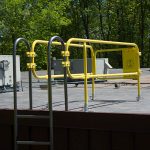 Yes, safety gates and guardrail are needed, because each potential opening or egress point created by a rooftop access ladder must be properly corralled off, combined with a swing gate to prevent an accidental fall through of an exposed rooftop opening, and OSHA regulation 1910.23(a)(2) leaves little room for interpretation. Read more.
Yes, safety gates and guardrail are needed, because each potential opening or egress point created by a rooftop access ladder must be properly corralled off, combined with a swing gate to prevent an accidental fall through of an exposed rooftop opening, and OSHA regulation 1910.23(a)(2) leaves little room for interpretation. Read more.
March 25, 2016, 8:16 am | Question from John | Category: Fall Protection Systems
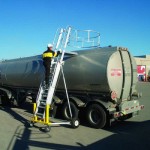 Several OSHA regulations can and do apply to fall protection for trailers and trucks; however, one specific regulation is broad and encompasses a wide range of applications and instances. It is this particular “gotcha” regulation where emphasis could be applied to trucks and trailers. OSHA 1926.501(b)(1) states: Read more.
Several OSHA regulations can and do apply to fall protection for trailers and trucks; however, one specific regulation is broad and encompasses a wide range of applications and instances. It is this particular “gotcha” regulation where emphasis could be applied to trucks and trailers. OSHA 1926.501(b)(1) states: Read more.
March 23, 2016, 9:11 am | Question from Dan | Category: Fall Protection Training
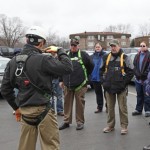 In regard to competent person training, OSHA is very clear in their definition of the topics an individual must be trained in to be able to give instruction to company employees. OSHA 1926.503(a)(2) states, “The employer shall assure that each employee has been trained, as necessary, by a competent person qualified in the following areas:” Read more.
In regard to competent person training, OSHA is very clear in their definition of the topics an individual must be trained in to be able to give instruction to company employees. OSHA 1926.503(a)(2) states, “The employer shall assure that each employee has been trained, as necessary, by a competent person qualified in the following areas:” Read more.
March 21, 2016, 7:42 am | Question from Stewart | Category: Fall Protection Training
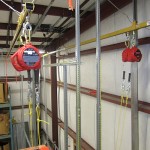 Fall awareness training, previously authorized user, is mandated by OSHA and must be provided for by the employer in all situations where workers are exposed to the risk of falling while conducting their job. Section 1926.503(a)(1) specifically states, “The employer shall provide a training program for each employee who might be exposed to fall hazards. The program shall enable each employee to recognize the hazards of falling and shall train each employee in the procedures to be followed in order to minimize these hazards.”1 Read more.
Fall awareness training, previously authorized user, is mandated by OSHA and must be provided for by the employer in all situations where workers are exposed to the risk of falling while conducting their job. Section 1926.503(a)(1) specifically states, “The employer shall provide a training program for each employee who might be exposed to fall hazards. The program shall enable each employee to recognize the hazards of falling and shall train each employee in the procedures to be followed in order to minimize these hazards.”1 Read more.
February 12, 2016, 11:19 am | Question from Hank | Category: Guardrails & Skylights
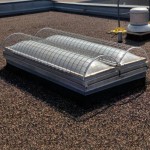 Skylight screens are a form of rooftop fall protection that can be retrofitted and installed on top of existing skylights to prevent workers or other employees on the roof from accidentally falling through if they are unprotected or open. These systems are sometimes referred to as safety covers and can be custom designed to fit over any irregular or odd-shaped skylight as needed. Read more.
Skylight screens are a form of rooftop fall protection that can be retrofitted and installed on top of existing skylights to prevent workers or other employees on the roof from accidentally falling through if they are unprotected or open. These systems are sometimes referred to as safety covers and can be custom designed to fit over any irregular or odd-shaped skylight as needed. Read more.
February 10, 2016, 1:44 am | Question from Maurice | Category: Fall Protection Training
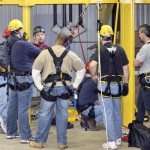 Competent person training does not determine or bestow qualifications within OSHA’s regulatory umbrella. Designations and directives relating to it are issued by and at the company level to certain employees who the company officers and officials believe have sufficient training, knowledge and on-the-job experience to warrant such an appointment. OSHA does not mandate, approve, endorse, or create specific criteria that defines who qualifies as the designated individual. Read more.
Competent person training does not determine or bestow qualifications within OSHA’s regulatory umbrella. Designations and directives relating to it are issued by and at the company level to certain employees who the company officers and officials believe have sufficient training, knowledge and on-the-job experience to warrant such an appointment. OSHA does not mandate, approve, endorse, or create specific criteria that defines who qualifies as the designated individual. Read more.
February 9, 2016, 12:15 pm | Question from Darren | Category: Fall Protection Systems
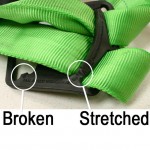 When inspecting a fall protection harness, the following is our list of recommended steps to take before each use: Read more.
When inspecting a fall protection harness, the following is our list of recommended steps to take before each use: Read more.
February 2, 2016, 11:48 am | Question from Mike | Category: Fall Protection Systems
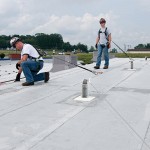 Starting with harnesses, a big driver of the cost of the equipment is ensuring comfort of the worker, so the material used is very important. For example, if you wear a harness all day, moving to lightweight aluminum hardware with a padded/cushioned harness will result is less wear on the body, resulting in more comfort. Equally as important to comfort is safety. Read more.
Starting with harnesses, a big driver of the cost of the equipment is ensuring comfort of the worker, so the material used is very important. For example, if you wear a harness all day, moving to lightweight aluminum hardware with a padded/cushioned harness will result is less wear on the body, resulting in more comfort. Equally as important to comfort is safety. Read more.
January 20, 2016, 10:22 am | Question from Mason | Category: Fall Protection Systems
 Worker weight is important on both sides of the scale when designing a fall protection system, because all equipment is designed and tested for both a minimum and a maximum weight. Read more.
Worker weight is important on both sides of the scale when designing a fall protection system, because all equipment is designed and tested for both a minimum and a maximum weight. Read more.
 Debris netting can be considered and used as a permanent solution to catch and retain concrete debris for long-term projects. Some applications in which it would be used as a continuing solution might be a large bridge rehabilitation project, a historic building restoration, infrastructure debris containment, etc. Read more.
Debris netting can be considered and used as a permanent solution to catch and retain concrete debris for long-term projects. Some applications in which it would be used as a continuing solution might be a large bridge rehabilitation project, a historic building restoration, infrastructure debris containment, etc. Read more.









